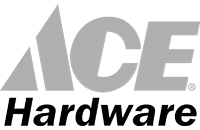DIY vs. Professional Water Softener Installation: Which Is Right for You?
If you’ve decided it’s time to invest in better water quality for your home, the next big question is whether you should install your new water softener yourself or hire a professional?
Today’s water softeners, especially compact, user-friendly models, make it easier than ever for homeowners to take the DIY route. But depending on your home’s plumbing setup and your comfort level with tools, a professional installation might still be the better fit.
Below, we’ll walk through both options to help you make a confident decision about what’s best for your home, your budget, and your comfort level.
The Case for DIY Installation
DIY water softener installation has become increasingly popular, especially among homeowners who enjoy tackling small plumbing projects themselves.
Cost Savings
The most obvious advantage is cost. Professional installation can add anywhere from $300–$1,000 to your total setup cost. By choosing an easy-to-install water softener, you can often save hundreds of dollars without sacrificing performance.
Simplicity and Convenience
Modern systems like the WaterBoss® 900 are designed specifically for homeowners who prefer to install their water softener themselves. Compact units and clear instructions mean there’s no need for advanced plumbing skills. Many installations can be completed in under two hours using only standard household tools.
Control and Confidence
DIY installation lets you understand your system from the inside out. That means you’ll be better equipped to maintain it and troubleshoot small issues down the road. Plus, there’s real satisfaction in knowing your family is enjoying cleaner, pure water because you installed your own water softener system.
Step-by-Step Guide to Installing a WaterBoss 900
If you’re comfortable with basic plumbing, installing a WaterBoss 900 can be a straightforward weekend project. Here’s a simplified, user-friendly guide for homeowners tackling the job for the first time:
Step 1: Choose the Right Location
Find a level, dry area near your main water line, power outlet, and drain. The unit should be installed after the pressure tank (if you have well water) and before your home’s water heater.
Step 2: Shut Off the Water Supply
Turn off your main water supply and open nearby faucets to relieve pressure.
Step 3: Bypass Setup
Use the included bypass valve to connect the softener to your home’s plumbing. The WaterBoss 900 includes fittings designed for an easy, secure fit.
Step 4: Connect the Drain and Overflow Lines
Attach the drain hose and overflow tube according to the instructions, ensuring both have a gentle slope for proper drainage.
Step 5: Plug In and Add Salt
Once the unit is connected, plug it into a grounded outlet and fill the brine tank with high-purity softener salt.
Step 6: Program and Flush
Set the hardness level and regeneration time according to your water test results. Then, slowly open the water supply and check for leaks.
That’s it! Your WaterBoss 900 is ready to provide continuous soft water throughout your home. If visuals are more helpful, we have an installation video too.
Avoiding Common Installation Mistakes
No matter which route you take, keep these common errors in mind:
- Skipping the water test: You need accurate hardness data to program your softener correctly.
- Incorrect drain setup: Ensure proper slope and no kinks in the drain line to prevent overflow.
- Over-tightening fittings: Can cause cracks or leaks in plastic connections.
- Forgetting the bypass valve: Always use it to isolate your softener for maintenance.
- Not checking for leaks before restoring full water pressure.
Taking time to double-check these steps can save you hours of frustration later.
When to Call a Professional
Even with an easy-to-install water softener, there are times when it’s best to bring in a licensed plumber.
- You have older or complex plumbing – If your home’s plumbing doesn’t use standard fittings, or if you notice corrosion or non-standard pipe sizes, a professional can ensure proper connections.
- Your water pressure fluctuates – Incorrect installation can lead to pressure loss or uneven flow, especially in older systems.
- You’re not comfortable cutting or soldering pipes – Many installations now use push-fit connectors, but if your system requires soldering or more advanced plumbing work, it’s safer to hire help.
When in doubt, consult a pro! The small upfront cost can prevent bigger issues later.
Cost Breakdown: DIY vs. Professional Install
| Installation Type | Estimated Cost | Best For |
|---|---|---|
| DIY Water Softener Installation | $0–$75 (materials) | Confident homeowners with basic plumbing skills |
| Professional Water Softener Install | $300–$1,000 | Homes with complex plumbing, old pipes, or pressure issues |
By choosing a system like the WaterBoss 900, which is designed for DIY water softener installation, many homeowners find they can get professional-quality results at a fraction of the cost.
Choosing the Right Approach for Your Home
Whether you’re a confident DIYer or prefer the peace of mind that comes with professional help, what matters most is getting a dependable system that protects your home and provides lasting water quality.
WaterBoss softeners are designed to make DIY installation simple, while still delivering the performance and reliability your family deserves.
To find a WaterBoss retailer near you and see which model best fits your home, visit our Where to Buy page today.






